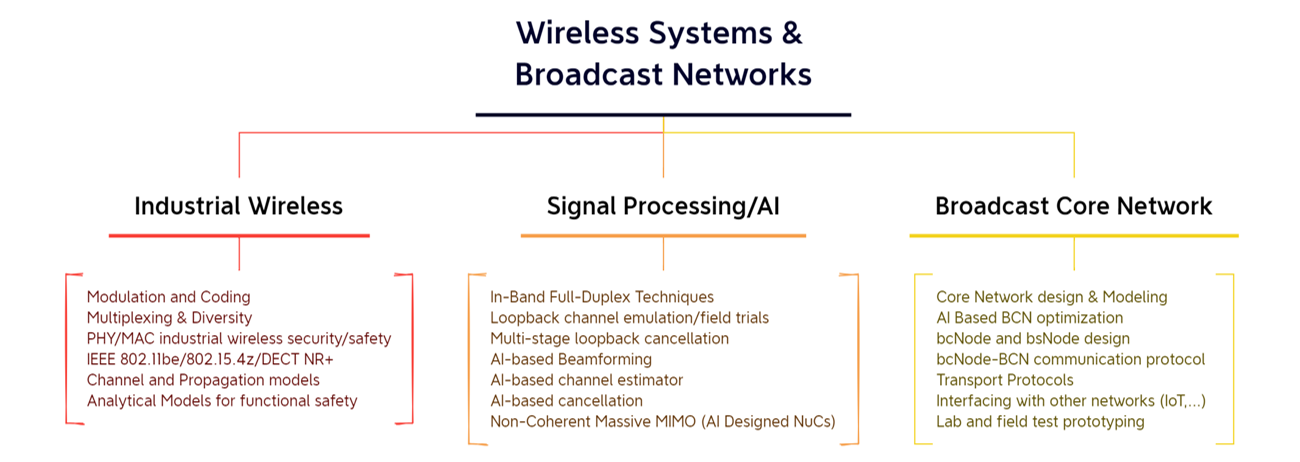Wireless Communications
PHYSICAL LAYER DESIGN FOR WIRELESS SYSTEMS
Proposals in this research line have been oriented traditionally to new terrestrial broadcast systems, but nowadays they include as well:
- New modulation, codification and interleaving techniques;
- Synchronization, channel estimation and equalization for wireless receivers;
- Advanced network planning design and analysis for different wireless communication systems over several frequency bands;
- Radio noise measurements in noisy environments from 1 kHz up to 1.3 GHz and characterization of the Gaussian and impulsive components of noise;
- Evaluation of the degradation of the quality of DRM digital modulation in impulsive noise environments
Expertise
- Testing Platform design for the definition and evaluation of different transmission/reception techniques (Complete DVB-T2, and ATSC 3.0 transceiver; Constellations design for wireless communications; Other physical layer procedures)
- Software Defined Radio Prototypes (DVB-T, DVB-H, DVB-T2, DVB-T2Lite, ATSC 3.0 receiver; LDM (Layered Division Multiplexing ) transceiver)
- Planning parameters characterization through comprehensive laboratory and field validations tests (TETRA, DVB-T2, DVB-T2 Lite, DAB+, ATSC 3.0 measurements; Receiver performance evaluation in the lab; Stress tests for wireless systems)
- Analysis of optimal topologies for wireless networks (Coverage and quality of service studies; Network architectures evaluation; Complex architectures optimization; Hybrid architectures BB-BC)

